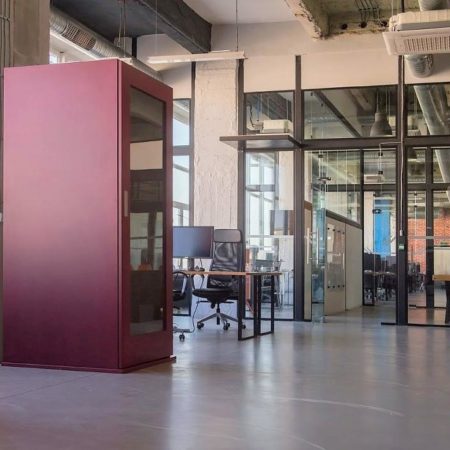Have you ever worked in a cubicle? It’s like a small four square metre prison cell. Sitting in your office chair, the only thing you see are family pictures you’ve pinned to the walls. Perhaps you recall the movie “Office Space” from the late 90s, starring Jennifer Aniston. It nicely depicts how it was working in office cubicles back then.
At first glance, open-plan layouts seem so much better. Gone are the prison walls. Everything feels so spacious and everyone can speak to their neighbour without having talk across a wall or walk to a private office. The theory is that as communication amongst employees increases, open-plan office layouts are supposed to improve productivity. It’s not surprising that 70% of offices in the US are open-plan these days. It’s probably a similar share in the UK.
However, the key driver behind the success of open-plan layouts – especially for small businesses – is cost savings. This is because you can squeeze in more employees per square foot. The average space per employee dropped from 225 square feet in 2010 to 151 square feet today. This is no surprise given some of the crazy rents businesses have to pay in places like San Francisco, New York or London.
The big question is: Do open-plan offices really increase productivity? Several studies suggest it’s actually the opposite. Busy account managers are often on calls with clients, creating constant noise. Colleagues who chat with each other about football matches or Kim Kardashian’s latest outfit cause further distraction.
Hence, it’s not surprising that research quoted by the BBC states that open-plan offices reduce employee productivity by 15%. Further research done in Australia revealed that 50% of employees in open-plan offices feel distracted by noise compared to only 16% for those lucky enough to have a private office. Moreover, when two businesses switched to an open-plan layout as part of a recent Harvard study, their employees’ measured email volume actually increased while face-to-face interactions declined. How do UK employees feel about this? In an online survey conducted by MEAVO, a UK manufacturer of office phone booths, 55% of respondents said they wished they had more privacy in their open-plan office.
Most small businesses are forced to keep the open-plan layout in order to save costs despite the negative impact on employee productivity. What can you do to mitigate this? Here are three tips:
Let employees work from home more often.
This will allow them to make important calls in a quiet setting or to concentrate on a difficult task without being distracted.
Create more private spaces.
Get a few free standing office phone booths. They don’t take up much space and are easy to set up. Employees can use them whenever they need some privacy – whether it’s getting on a call or focusing on work.
Introduce hot-desking.
If you don’t have the space for office phone booths or further meeting rooms, why don’t you make the space? Remove a few fixed desks and introduce hot-desking. Most of the time there are always a few desks vacant in offices as employees are sick, go on vacation, or work from home. In general, hot-desking is a great way for businesses to save even more on office rent.
Cost savings aside, most employees today would of course favour working in an open-plan office vs. a cubicle prison cell. However, businesses need to address the negative side-effects of open-plan work settings in order to get the best of both worlds.
